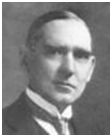PRE-OPERATIVE PRESCRIBING.
IT is claimed, and there is evidence to support the claim, that Phosphorus given in a single dose of a high potency the day before an abdominal operation, will prevent nausea and other distress after operation. Arnica has been used for the same purpose. Staphisagria, given before the incision for circumcision, allays the pain following incision and prevents inflammation.
Such generalising as the above is in accord with good homoeopathic methods and every case is a better surgical risk if it is well prescribed for beforehand.
POST-OPERATIVE PRESCRIBING.
Arnica, given immediately after operation, has a marked control over shock and soreness. It is a good routine practice to give Arnica after an operation until symptoms manifest themselves that indicate some other remedy.
Aconite is preferred by some instead of Arnica. A differential point would be Arnica where there is more of a shock to the tissues, a depression of the forces due to direct injury, a reaction asthenic in type; Aconite where the reaction is more sthenic, the shock being more mental. The location and character of the operation would be influencing factors. For instance, in operations on tissues that are very sensitive, such as the eye and urethra, Aconite would be more likely to be the remedy. In major operations, Arnica.
Where sphincters are lacerated or stretched, do not forget Staphisagria.
Frequently one of the above remedies will be all that is necessary to carry a patient through. In the cases where complications ensue, various factors determine the symptoms that follow. Healing starts with an inflammatory reaction and the location and tissues operated on determine the character of this inflammation.
The pathological condition of the patient is another factor. Back of everything is the constitution of the individual.
Rhus tox. has been a remarkably efficient remedy in relieving the soreness, restlessness and other distress after operation involving the right lower quadrant. The late Dr. Biegler of Rochester, N.Y., called Rhus tox. his homoeopathic knife in appendicitis. Phosphorus has been equally useful for the effects of operations involving the right upper quadrant, especially of the liver and gall-bladder. Arsenic has also been useful here. Probably this is because both of these remedies have an affinity for the liver.
Pulsatilla is indicated where the patient lies with hands above the head, keeps asking for air, and wants the month washed frequently.
Nux vomica relieves the vomiting after operation, when accompanied by much retching; irritability of the patient strengthens the indication.
Phosphorus where there is thirst for cold drinks, but water is vomited as soon as it becomes warm in the stomach. (Chloroform and Pyrogen). Arsenic and Phosphorus are much alike and should be compared in their finer differentiations. The insatiable thirst of Arsenic may make it seem like Phosphorus.
China relieves post-operative gas pains where there is no relief from passing gas up or down.
Raphanus for incarcerated gas in the upper abdomen. Aconite relieves the sleeplessness and anxiety following the continued use of Morphine.
Vomiting from the smallest quantity of water, Arsenic, Bismuth, Bryonia, Cadmium and Phosphorus.
INTESTINAL OBSTRUCTION.
In intestinal obstruction, there is no time to lose; patients die in a short time if not relieved, and the passage of a short time may make surgical interference futile. While waiting for the surgeon, an attempt should be made to prescribe, but not opiates. Nux vomica will sometimes relieve where there is much retching, especially if there is also urging to stool. Belladonna, Opium, Veratrum alb., Camphor, and Nux vomica where fecal vomiting is present. In a case apparently due to mesenteric embolus, where the vomitus had a fecal odour, Nux vomica controlled the condition. There was marked abdominal tenderness, tympanitis and marked aggravation from all odours such as perfume, tobacco and even odour of food.
Stannum has acted remarkably where the pains come and go slowly. It stopped the pain and released the bowels in a case of fecal obstruction. It stopped pain and removed the necessity for an operation in the case of an old lady with a growth in the left lower abdomen, that caused obstructive symptoms. It cured a left pyelonephritis in a woman, due apparently to impacted uric acid gravel. In all these cases, the leading indication was the gradual onset and gradual subsidence of the pain.
INJURIES AND THEIR COMPLICATIONS EYE INJURIES.
Aconite relieves the distress and inflammation from foreign bodies in the eyes. It is also useful after my injuries to the eyes. Coccus cacti has a sensation of a foreign body between the upper lid and eyeball, verified many times, and it has relieved the distress from foreign bodies lodged in the eye, that resist the spud. Coccus cacti is a useful remedy to carry when travelling with children on a train. When a cinder gets in the childs eye, after a few doses of this remedy the irritation ceases and something seems to happen to the cinder and it causes no further trouble. Arnica for injuries to the eye from a blow, with haemorrhage within the eyeball. Ruta when the bone around the eye is injured. Symphytum relieves the pain from a blow on the eyeball and prevents complications. Nux vomica in blood-shot eyes.
HEAD INJURIES.
Arnica relieves headache, dullness, sleepiness, and other symptoms following a blow to the head. Has cured, even when abscess resulted with discharge of pus from the ears.
Stupor persisting, consider Opium, which failing, give Helleborus. Also, think of Cicuta and Natrum sulph. For the effects of long past head injuries, Natrum sulph. and Cicuta are especially useful.
Calendula in potency, internally, is a specific for infected scalp wounds. Pyrogen may also be useful in infected scalp wounds.

